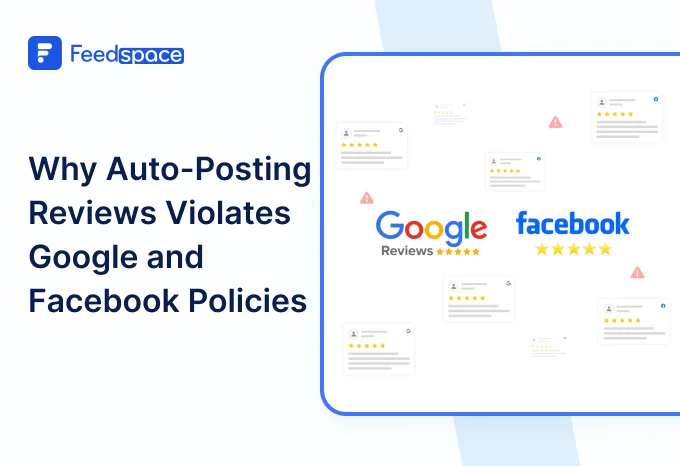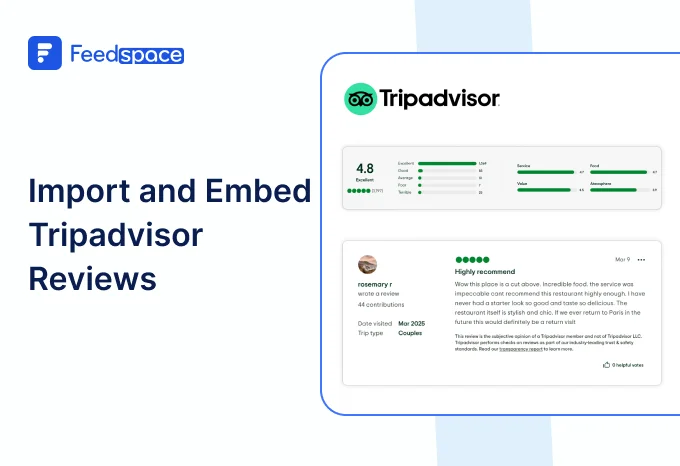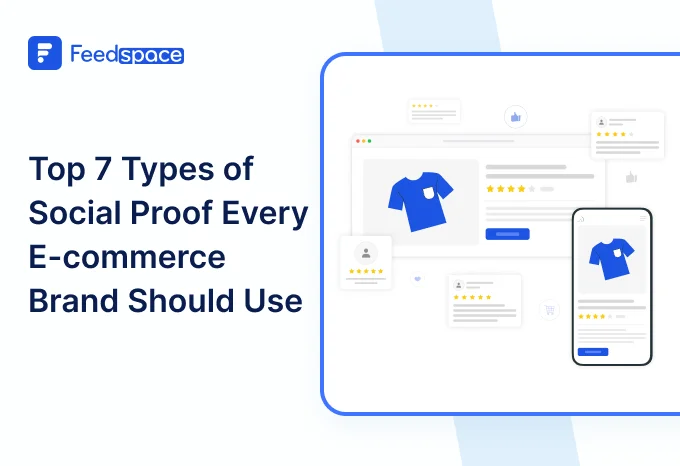Introduction
Ask any marketer or business owner and they’ll tell you one thing—good reviews and word of mouth is what brings in a lot of customers. It is no secret. We even tend to look up reviews for any new product or service we consider investing in. In fact, not just for the type of product or service but we also look up reviews for specific brands and try to understand what the general sentiment toward them is. And if the sentiment is largely negative we disregard that business altogether. That is the impact negative reviews can have—a complete breakdown of faith in a brand.
If you are a business owner or someone who manages a brand then you must start paying more attention to your brand’s reputation online. Ignoring it will only harm your presence in the long run and make it harder to bring back a positive image. It can take over 40 positive reviews to undo the impact from just one negative rating. In this article let us do a quick overview of best practices to follow for managing reputation online.
Why Responding to Negative Reviews is Essential
Negative reviews have a larger role to play in the decisions of a consumer than positive ones. Generally, people tend to look at the least and lowest rated reviews for a product or service to understand what is wrong with it or what others found unsatisfactory. And if these kinds of one star or negative reviews are left on your profile—you’re better off responding and addressing them rather than ignoring them.
Responding in the right manner will change the customer’s perception of what the review says. It could be negative in sentiment but if you were to address the points mentioned, detail out what or why the review is negative, and justify your position as the brand owner then you can flip around the sentiment. It is very simple to do. Just approach it with a cool mind, read and understand what the customer found unsatisfactory, and then apologize along with an explanation of what you’re doing to better it and improve the experience for others.
The impact isn’t restricted just to the reputation of your brand only. There is also a significant spike you can gain in SEO by responding to reviews. Whether it is a negative or a positive review, responding to them will give you a chance to organically inject keywords into your comments. This will have a direct impact on local SEO and help you stand out from your competitors, especially with Google Business Profiles.
Best Practices for Responding to Negative Reviews
How do you respond to negative reviews? There are a few things you have to keep in mind while engaging with them.
Acknowledge the Customer’s Concern
Read and understand what the customer did not like. Unless it is a rival or competitor of yours, negative customer reviews are going to be fair and mention an experience they had that was bad for them. Empathize with them and apologize for the experience they had. Tell them you want to rectify it and offer solutions or perks if they were to do business with you again.
Some examples of responses for different situations,
- Generic Negative Customer Experience: “Thank you for bringing this to our attention. We apologize for the frustration caused. We will look into this matter from our end and deal with it at the earliest.”
- Negative Experience With A Product: “I am very sorry to hear that the product did not meet your expectations. We appreciate you taking the time to share your experience with us. Please write to us and we will see what we can do to rectify this situation for you.”
- Long Wait Time at Restaurant: “We are disappointed to learn that you had to wait 45 minutes for your meal to arrive. Unfortunately, you had visited us during rush hour and it looks like our staff had explicitly mentioned that there would be long service times. However, we understand you might be disappointed and would like to offer you a voucher to our Shrimp Cocktail Buffet.”
- Product Arrived Damaged: “We apologize that the lamp you ordered arrived with a cracked shade. That is not acceptable at all, especially after having waited so long for the delivery. Please write to us and we will ship out a replacement as soon as possible.”
Apologize and Offer a Solution
Learn how to take responsibility without admitting fault, as long as it really isn’t a fault from your end. In certain cases the shipping agent might have mishandled the package. And in other cases maybe the manufacturer itself sent out a defective product to you in the first place. Readily admit that you are willing to take complete responsibility and that you will see to it that a solution is found.
These solutions can range anywhere from shipping out a replacement to offering a refund; providing a discount coupon code or complimentary access to something else.
Keep It Professional and Avoid Arguments
Never argue with your customers publicly. Having an argument out in the open will make you come off as an aggressive business owner. And this is highly unprofessional. No matter how triggering or aggressive the customer’s review might be you have to keep a cool head and deal with it accordingly. Some reviews might even be unfair or straight up wrong. Even in these cases it is always better to politely point out what the issue with their review is and how you want them to revisit their experience.
Potential new customers reading this will easily know that you aren’t the one at fault rather it is the reviewer who has left an unfair comment or rating. This will help them sympathize with your situation as the business owner who is affected by this negative sentiment for absolutely no fault of your own.
Some things to never say when responding to negative feedback includes,
- “That’s not what happened.” (Don’t be defensive)
- “You should have read the instructions.” (Don’t blame the customer)
- “We value your feedback.” (Don’t use generic templates without specifics, despite the examples we’ve provided just for reference)
- “We were short-staffed that day.” (Don’t make excuses)
- “This rarely happens.” (Don’t dismiss their experience)
- “This will never happen again.” (Don’t make promises you can’t keep)
- “I can’t believe you’re upset about something so minor.” (Don’t minimize their concerns)
- “As per our policy section 3.2.1…” (Don’t use technical jargon)
- “Other customers haven’t had this problem.” (Don’t compare to other customers)
- “We’ve been in business for 20 years.” (Don’t imply they’re wrong because of your experience)
Turning Negative Reviews into Positive Experiences
You can be smart and quickly turn negative reviews around into positive experiences. There are so many ways for you to do this. Let us take a look at just some of them. This is list is non-exhaustive so try out your own strategies too on top of this.
When it comes to resolving complaints and improving customer satisfaction, try these out:
- Respond quickly: Do not wait too long to respond to negative reviews. The longer you wait the longer your reputation lies there in the red. Switch on your notifications and regularly check to make sure you stay on top of the reviews you receive.
- Apologize sincerely: Don’t fake it. You need to actually feel for your customers and their bad experience. Tell them you are sorry and apologize sincerely. Write the apology yourself.
- Offer specific solutions: No generic stuff. Even the templates we’ve given you have to be filled in with specifics to your business, product, and service.
- Take conversations private when appropriate: Don’t run into long threads responding to reviews on Google or elsewhere. Take it private to either a WhatsApp chat or email.
- Follow up with customers: Your job does not end with providing a resolution or correcting it. Do a quick follow up with your customers and ask them how they feel now and if possible ask them to reconsider their review and leave you a new positive one.
- Document common issues: If there are certain issues or concerns that occur frequently you need to make a note of them and start addressing them quickly. This is you acknowledging your issues and making your product or service better.
- Train staff on feedback handling: If you have someone else doing the feedback handling or responding to reviews for you, then you need to train them on how to deal with these comments.
How to Collect and Showcase Positive Customer Feedback
All of this is easier said than done. There is a lot to get right and you can’t just collect and deal with feedback just for the heck of it. Let us see how we can ease the process of collecting and showcasing positive feedback from customers.
Collect and Import Reviews for a Stronger Reputation

There are many tools to help a business collect and import reviews from different platforms. These tools will let you avoid the manual labour of having to go to all these individual sites like Yelp and Trustpilot to download and manually own a copy of your reviews.
Some industry-wise examples:
- Restaurants & Cafés: Can import and put together restaurant customer reviews from customer review sites like Google, Yelp, and TripAdvisor
- E-commerce Stores: Collect reviews from different sites like Amazon, Flipkart, eBay, and Etsy.
- SaaS Businesses: Gather user testimonials from G2, Capterra, and Software Advice for your tools and new software and apps.
- Healthcare & Clinics: Import and make a copy of your patient feedback from Google, Zocdoc, and Healthgrades.
- Freelancers: Grow your freelance client base by getting testimonials from those you have worked with and featuring it on your website or social media.
Showcase Positive Reviews to Build Trust

If you are a business owner with many good reviews and testimonials you need to start making a copy of them to feature on your website. Even if you don’t have a website you can use tools like Feedspace to build a Wall of Love and link it as a website to your Google Business Profile.
Importing reviews is beneficial for you as a business owner since the reviews will now be in your possession. If they are lying on a third party platform they risk being deleted, removed, or worse the third party platform shutting down. For these reasons if you use a tool like Feedspace, make a copy of all the reviews you own, and bring it to your Feedspace account you will own a copy of it forever—as long as you have an account with Feedspace.
If you have a copy of your reviews you can even feature it on your social media, email campaigns, ads, and other marketing materials. There are clearly no downsides to collecting and importing the reviews you have, why wait any longer?
Conclusion – Strengthen Your Brand with Smart Reputation Management
88% of consumers would use a business that replies to all of its reviews, compared to just 47% who would use a business that doesn’t respond to reviews at all. So, it is in your best interest as a business owner to start strengthening your brand reputation online. The easiest way to do this is by actively engaging with your audiences, replying to all kinds of reviews, and responding politely to negativity. All of these things become a lot easier when you have an assistant by your side that can take care of these processes for you. One of the best assistants is a tool that can import, collect, and help you showcase your reviews. Sign up for a free account on Feedspace today and claim your workspace. We give you unlimited imports and any kind of technical support you need!




